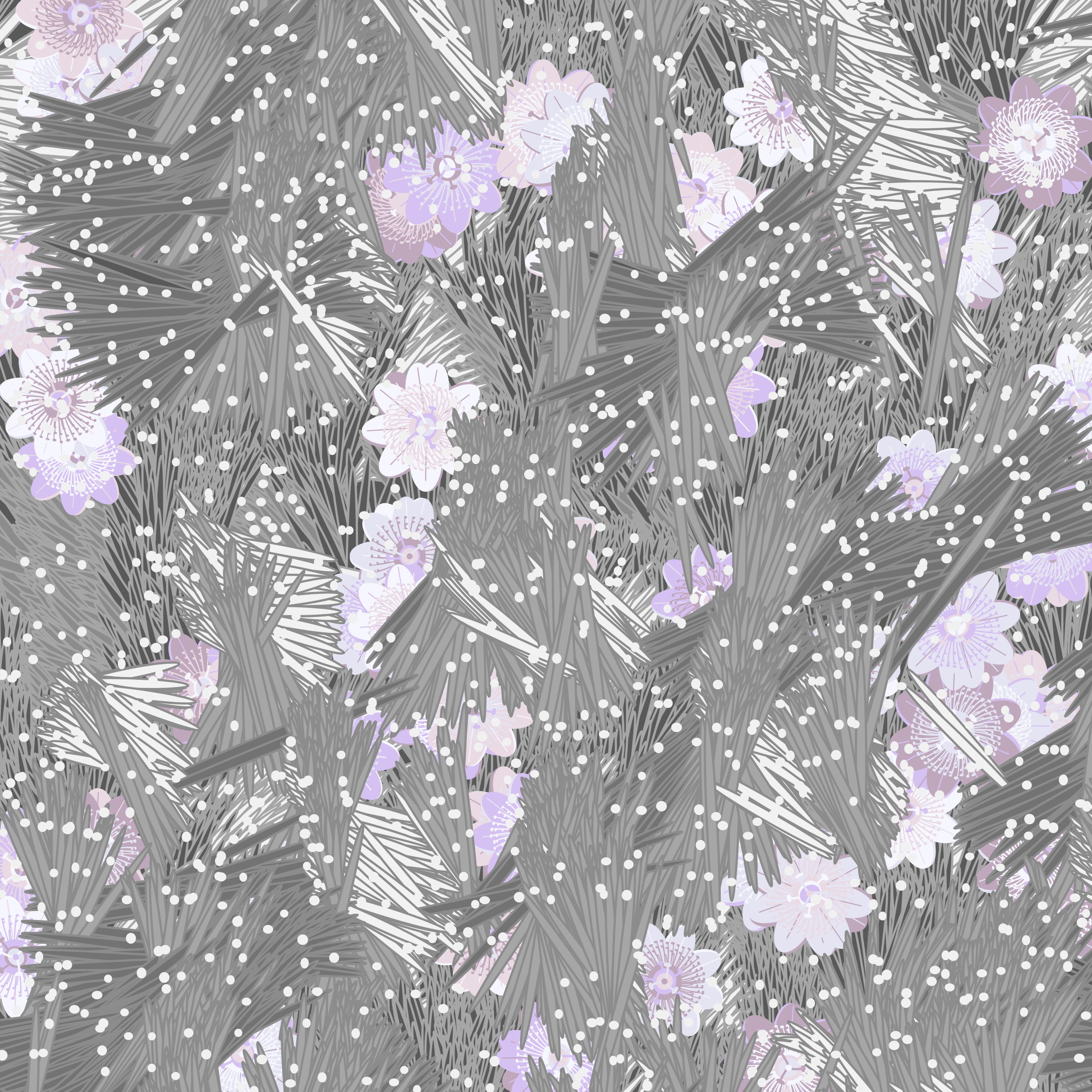Fragments of an Infinite Field #996
“Fragments of an infinite field” is a compositional system in which an idealized plant species is generated and arranged in a potentially infinite field of foliage. The main environmental parameter of the composition is the determination of a season of the year. The season determines the landscape’s colors and defines specific phenomena for each of them, such as rain in summer, snow in winter, petals falling in autumn, and pollen in spring. The flower has several possible variables, which can be macro aspects, affecting the entire population of the species, or micro, affecting each individual of the species differently.
For example, the number of petals can be equal in all individuals or not. The number of filaments and other structures of the flower can undergo minor deviations, generating small mutations. The confusion between the figure (plant) and the background (earth, sky, other natural elements) is fascinating from a compositional point of view. The background colors are, most of the time, colors present in the figures, often breaking the boundary between them and, therefore, generating chromatic masses.
In this project I also intend to research the following question: How to create parameters that resemble a living organism's growth? In this sense, the project approaches digital morphogenesis and the development of procedural organisms.
Medium
Image
Process
Procedural
Tags
Organic
Edition Type
1/1/1024
Date of Mint
September 13, 2021
Date of Acquisition
March 20, 2023
Acquisition Number
101
Contract Address
Token ID
159000966
Fragments of an Infinite Field by Monica Rizzolli is an eccentric seasonal project inspired by the artist’s early fine art practices and studies. In 2012, Rizzolli practiced drawing landscapes to represent the changes that occurred throughout the year. Fragments of an Infinite Field brings this practice of representing seasonal changes into the digital realm by featuring cascading flowers going through the four seasons and their corresponding phenomenas such as rain, snow, pollen clouds and wilting petals. Additionally, the project incorporates traditional aesthetics of woodcut artworks, a genre Rizzolli studied at the early age of 15 while at Espaço Henfil De Cultura Baeta Neves. In February 2023, Cozomo de’ Medici would gift an edition from the series to the Los Angeles County Museum of Art (LACMA), cementing the projects legacy for decades to come. Le Random’s collection includes a complete season set with Summer, Winter, Autumn, and Spring variations.





